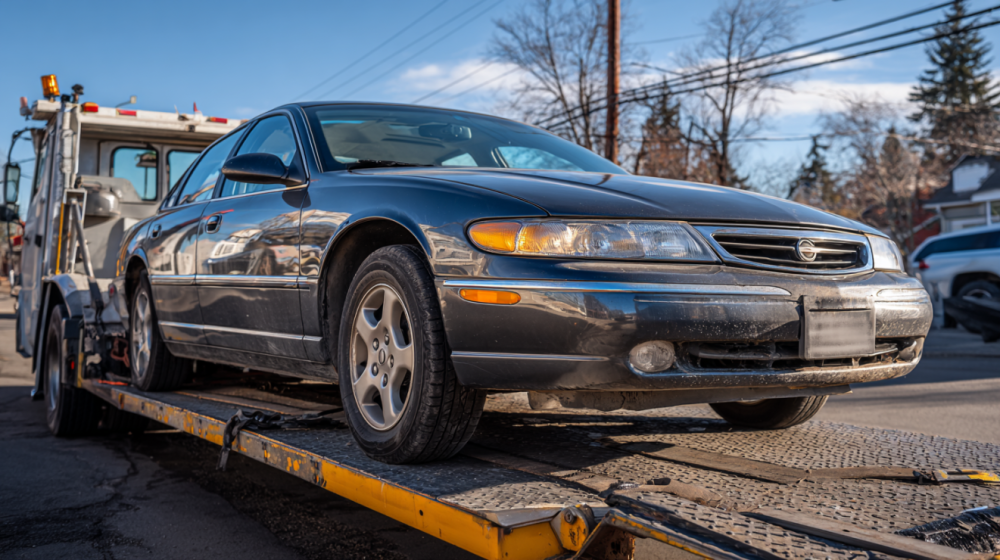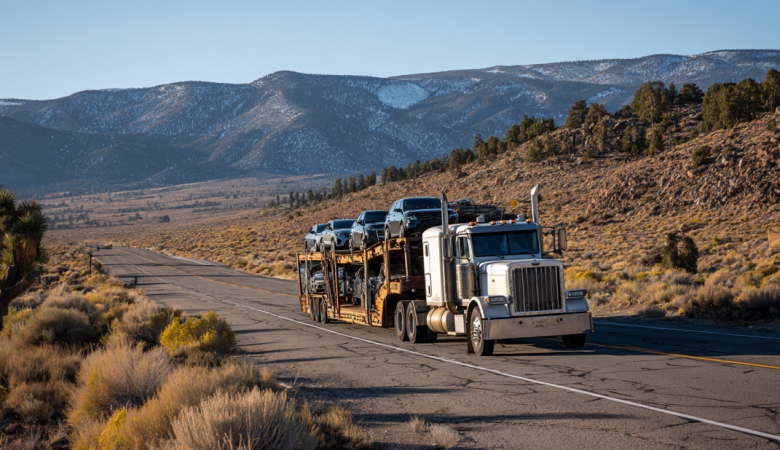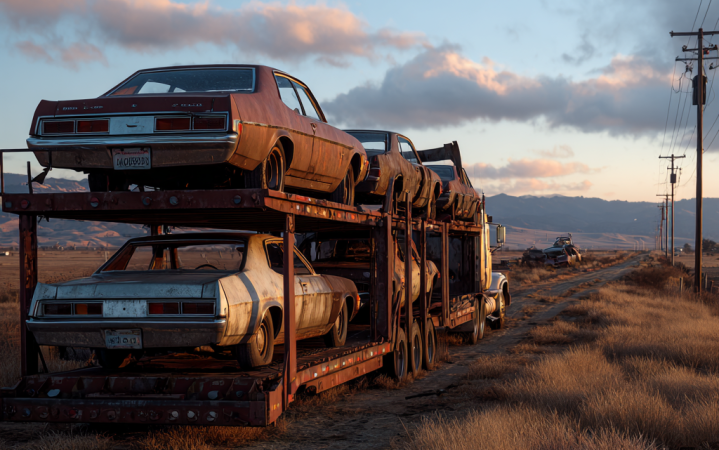Learning how to move a non-running car can feel stressful if you’ve never handled a vehicle that will not start or move on its own. Whether the issue is mechanical failure, auction damage, or an accident, understanding how to move a non-running car helps you prepare, avoid delays, and budget realistically. This simple guide explains how to move a non-running car step by step so you know exactly what to do.
Many drivers begin researching how to move a non-running car after buying a project vehicle online, dealing with a roadside breakdown, or trying to arrange car shipping for repair after a collision. If you’re shipping a totaled vehicle, transporting a salvage car, or planning auction car shipping across the United States, knowing how to move a non-running car makes coordination easier and prevents surprises during pickup.
Step 1: Assess the Vehicle’s Condition

One of the most important parts of learning how to move a non-running car is accurately assessing the vehicle. Some cars start but cannot move; others are fully inoperable. Carriers need to know whether the wheels roll, whether the brakes are locked, if steering is functional, and whether the car is stuck in park. Being specific helps the car transport company match the job with the right equipment.
For example, if you need to tow a car that won’t start, ship a broken car from your home, or arrange damaged car transport from an auction yard, the carrier may need a winch, a flatbed, or other tools. When auction car shipping is involved, make sure the auction listing reflects the true condition. Even running cars may need assistance loading and unloading at pickup.
Clear information prevents delays and extra fees and helps ensure a smooth experience.
Step 2: Select the Right Transport Method
Choosing the correct transport method is a key part of how to move a non-running car. Your options depend on distance, the type of vehicle, and how much protection you want.
Open Carrier Transport
Open carrier car shipping is usually the most affordable auto transport option. These trailers are widely available, making them popular for state-to-state car shipping, long-distance car shipping, and cross-country auto transport. Carriers use ramps and winches to load and unload non-running vehicles. If the wheels can roll, this method is often the cheapest way to ship.
Enclosed Auto Transport
Enclosed auto transport offers extra protection from weather and debris. This is ideal for custom builds, classic cars, and vehicles with fresh paint or sensitive modifications. It costs more than open transport but provides greater security. Please note, this option is not always available for inoperable vehicles.
Flatbed Car Shipping
Flatbed car shipping is common for local car transport services or for vehicles that cannot be safely loaded onto standard trailers. This option works well when arranging auto transport for damaged cars that have severe wheel, steering, or suspension damage.
Understanding these options helps you choose the most effective way to move your vehicle.
Step 3: Learn How Pricing Works
A major part of learning how to move a non-running car is understanding how car shipping costs are calculated. Prices depend on several factors:
- Pickup and delivery locations
- Distance and route
- Transport type
- Condition of the vehicle
- Equipment required
Using a car shipping price calculator is the fastest way to estimate the cost to ship non-running vehicles. You can also compare car shipping quotes USA to understand typical pricing. When requesting a transport quote, make sure you mention that the vehicle does not run. Accurate details prevent unexpected changes in cost.
Transporting a salvage car from an auction may include storage fees, release requirements, or limited operating hours. Car transport for auctions varies, so check the rules beforehand.
Step 4: Prepare the Vehicle for Pickup

Preparing your vehicle is another important part of how to move a non-running car. A few steps make loading faster and safer:
- Remove personal items. Transport trucking rules limit what can remain in a vehicle.
- Confirm wheel movement. Cars that cannot roll require special equipment.
- Secure loose parts. This is necessary when shipping a broken car or transporting a salvage car with exterior damage.
- Provide keys. Even inoperable car transport often requires the keys to unlock the steering or shift the vehicle.
Good preparation ensures the driver can load the vehicle without delay.
Step 5: Meet the Driver at Pickup
On pickup day, knowing how to move a non-running car will help you understand the process. The driver performs an inspection and records the vehicle’s condition in the bill of lading. This protects both you and the carrier.
Door-to-door car shipping allows the driver to meet you directly at your home or another address. If the neighborhood has narrow streets, you might meet the carrier in a nearby open parking area. The driver loads the vehicle using a winch, tow truck, or flatbed, depending on its condition.
Once loaded, the driver begins transporting your vehicle along the scheduled route.
Step 6: Receive the Vehicle at Delivery
At delivery, you’ll review the vehicle’s condition with the driver and sign the final portion of the bill of lading. Understanding how to move a non-running car helps you know what to check for and what is normal after transport.
If you arranged car shipping for repair, you can have the vehicle delivered straight to the mechanic. Being available by phone is important during long-distance car shipping and cross-country auto transport.
Tips to Save Money and Avoid Problems
Knowing how to move a non-running car also means knowing how to reduce costs. These tips help you find cheap car shipping options without sacrificing reliability:
- Choose open transport when possible.
- Compare multiple transport quotes.
- Ship during off-peak seasons when demand is lower.
- Provide accurate information about the vehicle’s condition.
- Have loading and unloading equipment available.
- Avoid remote pickup and delivery locations when you can.
These strategies help you keep the cost of shipping manageable.
When Special Handling Is Needed
Some vehicles require additional care. Many drivers researching how to move a non-running car discover that certain issues require special equipment. Vehicles with bent wheels, missing tires, or severe body damage often need flatbed car shipping. Inoperable car transport for auction vehicles may require coordination with staff to access loading zones.
If your vehicle has extensive damage, knowing how to move a non-running car helps you request the right equipment and avoid delays.
Choosing the Right Transport Company
The final part of understanding how to move a non-running car is choosing an experienced carrier. Look for a company familiar with damaged car transport, non-operational vehicle transport, and salvage car shipping. Ask questions about equipment, insurance, pickup scheduling, and vehicle shipment tracking.
A reliable provider makes the entire process easier and ensures your vehicle arrives safely.
Final Thoughts
Whether you’re shipping a totaled vehicle from your home, transporting a salvage car from an auction, or arranging auto transport for damaged cars across the country, knowing how to move a non-running car gives you confidence and helps you make informed decisions. With good preparation and a trustworthy car hauler service, you can ship your vehicle safely anywhere in the United States.






Leave a Reply
You must be logged in to post a comment.